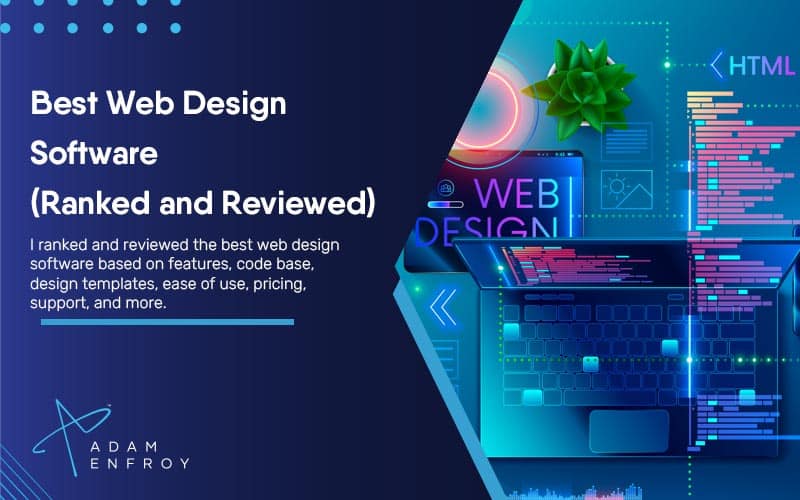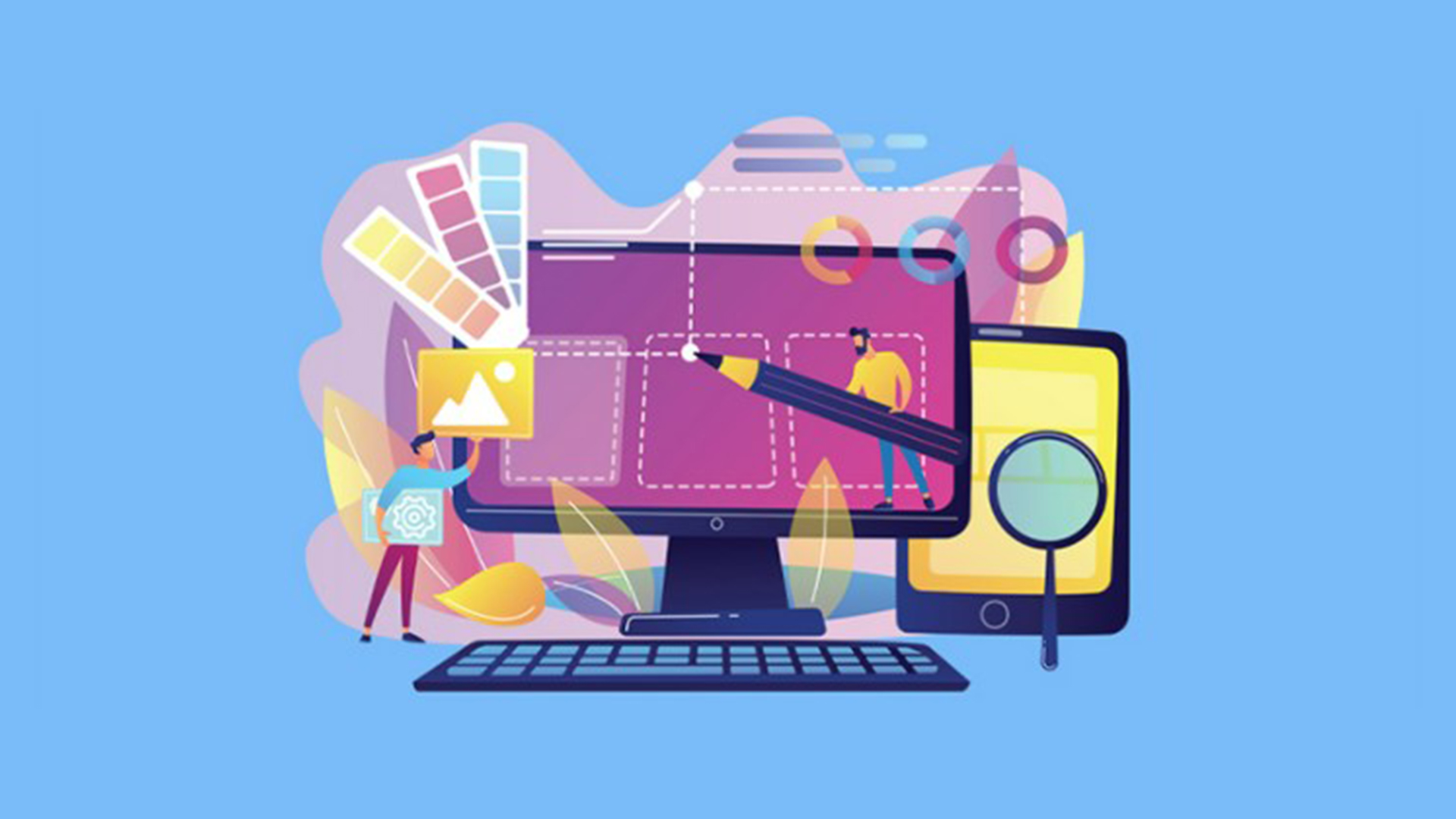All Categories
Featured
Table of Contents
- – Basics Of Web Development & Coding Specializat...
- – Web Design - Linkedin Learning, Formerly Lynd...
- – Powderkeg: Web Design Madison, Wi Tips and Tr...
- – Web Design Software By Xara Tips and Tricks:
- – Web Page Design: A Comprehensive Guide - Adob...
- – Web Design Services - Verizon Small Business ...
- – Web Design Projects - Behance Tips and Tricks:
- – Awwwards - Website Awards - Best Web Design ...
- – Boxcar Studio - Wordpress & Drupal Web Desig...
- – The Top 10 Most Important Elements Of A Webs...
- – Web Design Blog - Webdesigner Depot Webdesig...
Basics Of Web Development & Coding Specialization - Coursera Tips and Tricks:
Quick summary Usability and the energy, not the visual design, determine the success or failure of a website. Considering that the visitor of the page is the only individual who clicks the mouse and therefore chooses whatever, user-centric style has established as a basic method for successful and profit-oriented website design - web design frederick md.
and the utility, not the visual style, identify the success or failure of a site. Given that the visitor of the page is the only person who clicks the mouse and therefore decides whatever, user-centric design has actually ended up being a standard method for successful and profit-oriented website design. If users can't use a feature, it might as well not exist.
g. where the search box need to be positioned) as it has actually already been carried out in a number of posts; instead we focus on the techniques which, used correctly, can result in more sophisticated style decisions and simplify the procedure of perceiving provided information. Please notice that you might be interested in the usability-related articles we have actually released before: Principles Of Great Site Style And Effective Website Design Standards, In order to use the concepts appropriately we first need to understand how users engage with websites, how they believe and what are the fundamental patterns of users' habits.
Web Design - Linkedin Learning, Formerly Lynda.com Tips and Tricks:
Visitors glance at each new page, scan a few of the text, and click on the very first link that catches their interest or slightly looks like the thing they're searching for. In truth, there are large parts of the page they don't even look at. Many users search for something intriguing (or helpful) and clickable; as quickly as some appealing prospects are found, users click.
If a page offers users with top quality material, they want to compromise the material with advertisements and the design of the site. This is the factor why not-that-well-designed websites with high-quality material gain a lot of traffic over years. Material is more essential than the design which supports it.

Users don't check out, they scan. Notification how "hot" locations abrupt in the middle of sentences. This is typical for the scanning process. Very easy principle: If a site isn't able to fulfill users' expectations, then designer stopped working to get his job done correctly and the business loses cash. The higher is the cognitive load and the less intuitive is the navigation, the more prepared are users to leave the site and look for options.
Powderkeg: Web Design Madison, Wi Tips and Tricks:
Neither do they scan website in a linear fashion, going sequentially from one site area to another one. Instead users satisfice; they choose the first sensible choice. As quickly as they discover a link that looks like it might cause the goal, there is a very excellent chance that it will be right away clicked.
It does not matter to us if we comprehend how things work, as long as we can use them. If your audience is going to act like you're creating signboard, then style terrific signboards." Users wish to have the ability to control their internet browser and depend on the consistent data discussion throughout the site.
If the navigation and website architecture aren't instinctive, the variety of question marks grows and makes it harder for users to comprehend how the system works and how to obtain from point A to point B. A clear structure, moderate visual hints and easily identifiable links can assist users to discover their course to their aim.
Web Design Software By Xara Tips and Tricks:

claims to be "beyond channels, beyond items, beyond circulation". What does it mean? Since users tend to check out websites according to the "F"-pattern, these 3 statements would be the first components users will see on the page once it is packed. The design itself is basic and intuitive, to understand what the page is about the user needs to browse for the answer.
As soon as you have actually achieved this, you can communicate why the system works and how users can benefit from it. People will not use your web site if they can't discover their method around it. 2. Do Not Squander Users' Patience, In every task when you are going to offer your visitors some service or tool, try to keep your user requirements very little.
Novice visitors want to, not filling long web forms for an account they may never ever use in the future. Let users explore the website and find your services without requiring them into sharing private information. It's not reasonable to require users to go into an e-mail address to evaluate the feature.
Web Page Design: A Comprehensive Guide - Adobe Xd Ideas Tips and Tricks:
Stikkit is a perfect example for an user-friendly service which needs nearly absolutely nothing from the visitor which is unobtrusive and soothing. Which's what you want your users to feel on your website. Obviously, Termite needs more. The registration can be done in less than 30 seconds as the type has horizontal orientation, the user does not even require to scroll the page.
A user registration alone is adequate of an obstacle to user navigation to cut down on incoming traffic. Manage To Focus Users' Attention, As sites provide both fixed and vibrant material, some aspects of the user interface draw in attention more than others do.
Focusing users' attention to specific areas of the site with a moderate usage of visual components can help your visitors to receive from point A to point B without thinking of how it in fact is expected to be done. The less question marks visitors have, the they have and the more trust they can develop towards the business the site represents.
Web Design Services - Verizon Small Business Essentials Tips and Tricks:
4. Make Every Effort For Function Direct exposure, Modern website design are typically slammed due to their method of guiding users with aesthetically appealing 1-2-3-done-steps, big buttons with visual impacts and so on. From the design viewpoint these components really aren't a bad thing. On the contrary, such as they lead the visitors through the site content in a very basic and user-friendly way.
The website has 9 main navigation alternatives which show up at the first glimpse. The choice of colors might be too light, though. is a basic concept of effective interface design. It doesn't really matter how this is achieved. What matters is that the material is well-understood and visitors feel comfortable with the method they communicate with the system.
com gets directly to the point. No charming words, no exaggerated statements. Rather a price: just what visitors are looking for. An optimum option for effective writing is touse short and concise expressions (come to the point as quickly as possible), use scannable layout (classify the material, utilize numerous heading levels, utilize visual components and bulleted lists which break the circulation of consistent text blocks), use plain and unbiased language (a promo doesn't require to seem like ad; give your users some affordable and objective reason why they need to use your service or remain on your website)6.
Web Design Projects - Behance Tips and Tricks:
Users are seldom on a site to take pleasure in the design; in addition, for the most part they are trying to find the information despite the design - web design frederick md. Pursue simplicity rather of intricacy. From the visitors' point of view, the best site design is a pure text, with no ads or further content blocks matching exactly the query visitors utilized or the material they've been looking for.
Finch clearly presents the info about the website and gives visitors a choice of choices without overcrowding them with unneeded content. 7. Do not Be Afraid Of The White Area, Actually it's really tough to overstate the importance of white space. Not only does it assist to for the visitors, however it makes it possible to view the details provided on the screen.
Complex structures are harder to read, scan, examine and deal with. If you have the choice between separating 2 style segments by a noticeable line or by some whitespace, it's usually better to utilize the whitespace option. (Simon's Law): the better you manage to supply users with a sense of visual hierarchy, the simpler your content will be to perceive.
Awwwards - Website Awards - Best Web Design Trends Tips and Tricks:
The exact same conventions and guidelines need to be applied to all elements.: do the most with the least quantity of cues and visual elements. Clarity: all elements should be designed so their significance is not uncertain.
Conventions Are Our Pals, Traditional style of website aspects does not result in a boring website. As they decrease the learning curve, the requirement to figure out how things work. For instance, it would be a functionality problem if all websites had different visual presentation of RSS-feeds. That's not that various from our regular life where we tend to get utilized to basic principles of how we arrange data (folders) or do shopping (positioning of items).
comprehend what they're getting out of a site navigation, text structure, search positioning etc. A case in point from use sessions is to equate the page in Japanese (presuming your web users don't understand Japanese, e. g. with Babelfish) and offer your functionality testers with a job to find something in the page of different language.
Boxcar Studio - Wordpress & Drupal Web Design ... - Ann Arbor Tips and Tricks:
Test Early, Test Typically, This so-called TETO-principle ought to be used to every web style task as usability tests typically provide into substantial problems and issues related to a provided layout. Test not too late, not too little and not for the incorrect factors.
Some essential indicate keep in mind: according to Steve Krug, and testing one user early in the task is much better than testing 50 near completion. Accoring to Boehm's very first law, errors are most frequent throughout requirements and style activities and are the more costly the later they are removed.
That implies that you create something, test it, fix it and after that test it once again. There might be problems which haven't been found during the preliminary as users were virtually obstructed by other issues. functionality tests. Either you'll be pointed to the issues you have or you'll be pointed to the absence of significant style defects which is in both cases an useful insight for your project.
The Top 10 Most Important Elements Of A Website Design Tips and Tricks:

This holds for designers. After you've worked on a site for couple of weeks, you can't observe it from a fresh viewpoint any longer. You know how it is developed and therefore you understand precisely how it works you have the knowledge independent testers and visitors of your site would not have.
It can be connected to other areas such as graphic design, user experience, and multimedia arts, but is more appropriately seen from a technological standpoint. It has actually ended up being a big part of people's everyday lives. It is difficult to imagine the Web without animated graphics, various styles of typography, background, videos and music.

Throughout 1991 to 1993 the World Wide Web was born. Text-only pages might be viewed using an easy line-mode internet browser. There had actually been no integrated method to graphic design elements such as images or noises.
Web Design Blog - Webdesigner Depot Webdesigner Depot Tips and Tricks:
The W3C was produced in October 1994 to "lead the World Wide Web to its full capacity by developing typical procedures that promote its advancement and ensure its interoperability." This prevented any one company from monopolizing a propriety internet browser and shows language, which might have altered the result of the Web as a whole.
As this has occurred the innovation of the web has likewise carried on. There have also been significant modifications in the method individuals use and access the web, and this has changed how sites are designed. Because the end of the web browsers wars [] brand-new web browsers have been launched. Much of these are open source implying that they tend to have quicker advancement and are more helpful of brand-new standards.
Learn more about Lovell Media Group LLC or TrainACETable of Contents
- – Basics Of Web Development & Coding Specializat...
- – Web Design - Linkedin Learning, Formerly Lynd...
- – Powderkeg: Web Design Madison, Wi Tips and Tr...
- – Web Design Software By Xara Tips and Tricks:
- – Web Page Design: A Comprehensive Guide - Adob...
- – Web Design Services - Verizon Small Business ...
- – Web Design Projects - Behance Tips and Tricks:
- – Awwwards - Website Awards - Best Web Design ...
- – Boxcar Studio - Wordpress & Drupal Web Desig...
- – The Top 10 Most Important Elements Of A Webs...
- – Web Design Blog - Webdesigner Depot Webdesig...
Latest Posts
Web Design And Development - Invision Tips and Tricks:
Web Design Icon:
Web Design Studio & Digital Marketing Agency • Gravitate Tips and Tricks:
More
Latest Posts
Web Design And Development - Invision Tips and Tricks:
Web Design Icon:
Web Design Studio & Digital Marketing Agency • Gravitate Tips and Tricks: